Trijicon’s reengineered miniature rifle optic gets the job done on a pair of Rio Grande turkeys
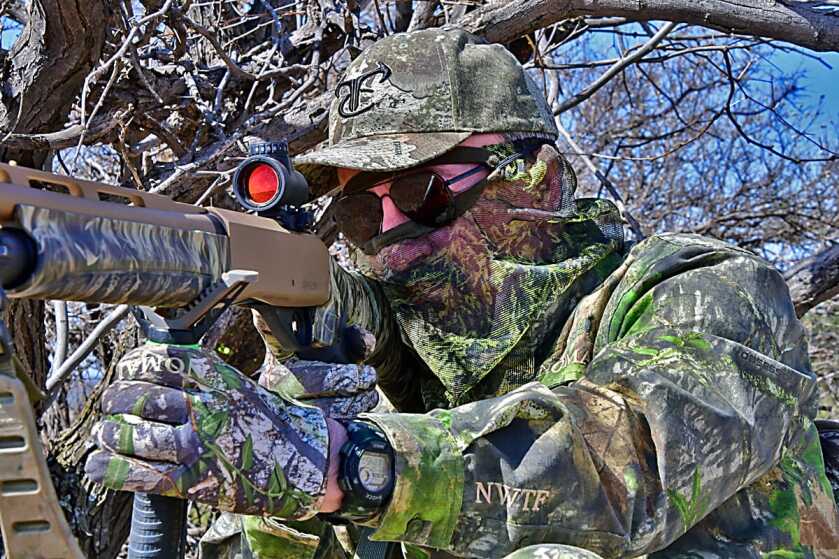
Many people have issues using red dot sights because of a common vision issue called astigmatism, which is an imperfection in the curvature of the cornea or lens of the eye. Astigmatism can cause distorted or blurred vision, especially when looking at lights, including the illuminated dots of reflex sights. If you look through a red dot sight and see a starburst or halo effect, or a smear or streak or even double dots, you probably have astigmatism. Many people do and don’t realize it. Even with corrective lenses, some of these effects can remain whether you wear glasses, contact lenses, or, in my case, have implanted lenses from cataract surgeries. These corrective lenses can, by themselves, cause a halo effect, as can LASIK surgery. Everyone’s eyes are different, and there is no one-size-fits-all solution, but the best red-dot solution I’ve found to date that works for me is Trijicon’s MRO HD 1X25 red dot sight.
The MRO HD is a re-engineered version of Trijicon’s original MRO (miniature rifle optic) sight. The first-generation MRO sight was criticized by some for having something of a blue tint and slight magnification. The MRO HD has none of these issues. It is a true 1X sight and has been redesigned with an objective lens that produces a refined 2.0 MOA center dot and a 68 MOA “donut of death” segmented-circle reticle. One of the things that makes this sight work so well for me is that the main lens is aspherical. I don’t want to tell you more about lenses than you want to know, but spherical lenses have the same curvature from top to bottom and left to right. Aspherical lenses are more complex, with the curvature varying in different areas to correct such things as spherical and chromatic aberration. With the MRO HD, think of the lens as being specially made to focus the dot. The result, for me, was a sight with a very crisp and refined dot and segmented circle reticle, especially at the lower power settings I am most likely to use most of the time.
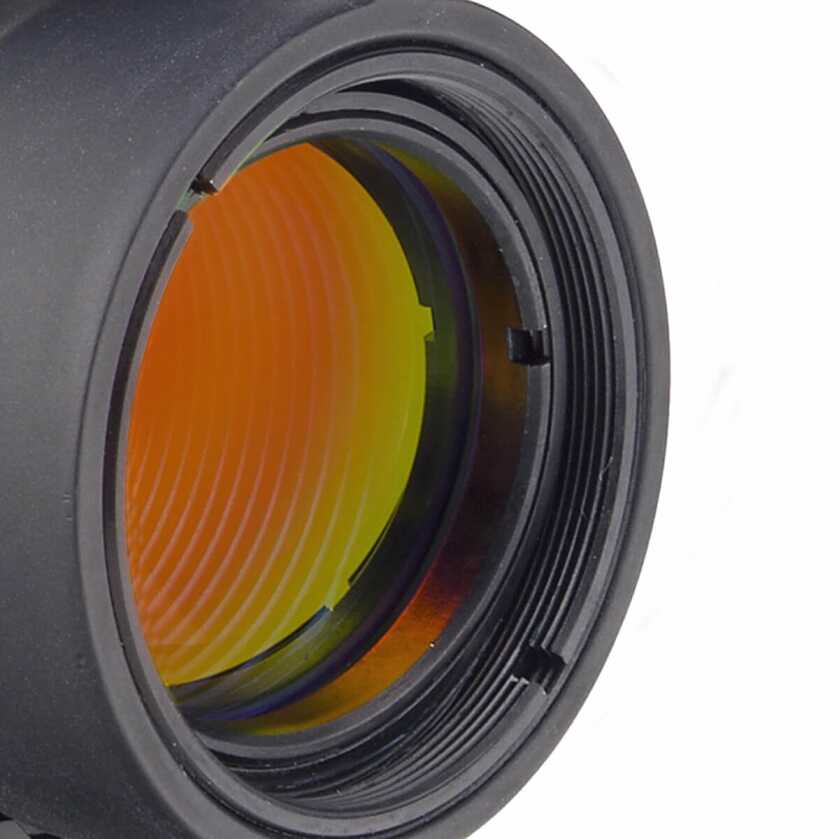
It’s clear even at a glance that the sight uses top-tier glass, and Trijicon goes to great lengths to ensure that the multiple coatings on the lens are applied uniformly so that users get a uniform view, with no distortion, when looking through the sight. Some reviewers have pointed out that, under certain lighting conditions, it’s possible to see a very faint reflection of the filament or circuit board. In several days of use, I noticed this only once or twice, depending on the sun’s position, but it was so faint as to be a complete non-issue for me.
I recently put the sight to the test against Rio Grande turkeys in west Texas, hunting with Hargrove Hunts and Trijicon representative Eddie Stevenson, who purely loves to call turkeys and is pretty good at it. For this hunt, I mounted the MRO HD on my fairly light EAA Girsan MC312 Gobbler 12-gauge shotgun, which has a healthy amount of recoil when stoked with the Federal three-inch, two-ounce Heavyweight TSS loads I used for the hunt (look for a full review of this shotgun soon). This, combined with several days of rough and dusty treatment, would provide a good test of the ruggedness of MRO HD sight. It passed with flying colors, and that was no surprise. Many Trijicon optics are designed first and foremost for military and law enforcement use and all that implies.
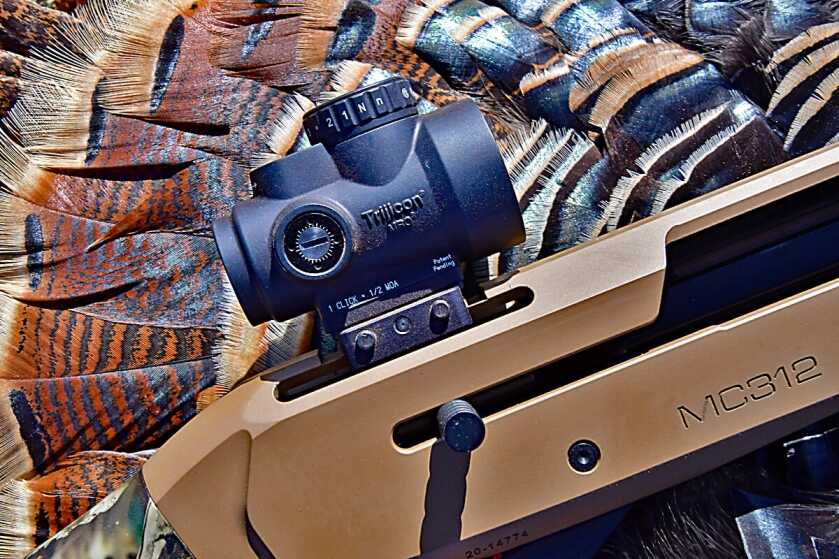
The sight also passed the “moment-of-truth” test. I took two Rios using the sight, and both would have been somewhat tricky shots using a standard shotgun bead sight. On both occasions, we had multiple birds milling around closely together, thanks to Eddie’s calling skills, and there were only brief moments when I could shoot a gobbler without hitting another bird or the decoys. Because this sight has a large aperture for such a small optic, maximizing the viewing area and allowing for fast target engagement, I was able to keep the crisp red dot on the upper neck of each bird and wait for the first clear shot opportunity. When those fleeting moments of opportunity came, my trigger finger seemed to do its little act all by itself, and the MRO HD sight made the job instinctively easy. The result was two birds swatted into the freezer with two shots.
As noted, the MRO HD is built to stand up to abuse. It has a fully sealed and nitrogen-filled housing made of 7075-T6 forged aluminum. The unit measures 2.9 inches long, 1.7 inches wide, and 3 inches high if you get it with Trijicon’s low mount. You can also get the sight with no mount, a full co-witness mount, and a 1/3 co-witness mount. It weighs just 5.6 ounces with the low mount attached. The unit is waterproof to 100 feet and is designed to work in temperatures from minus 60 degrees to 160 degrees Fahrenheit. The finish is matte black.
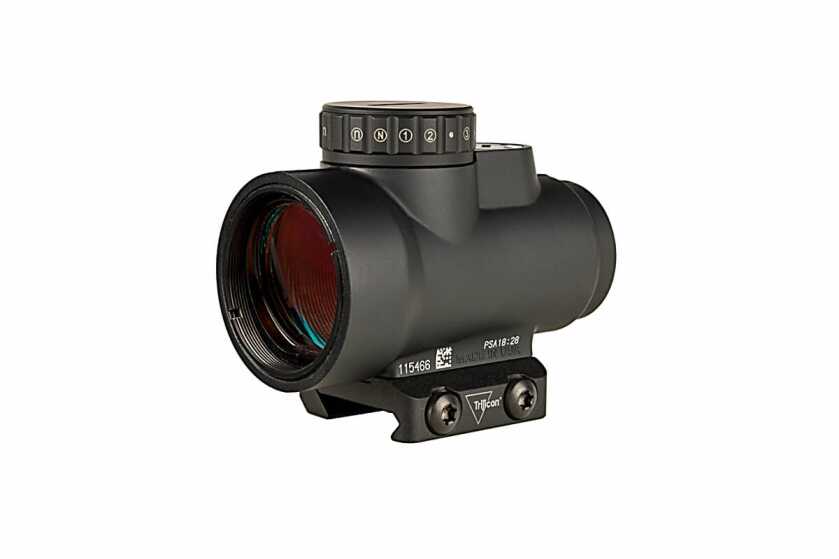
Although I didn’t use one on the hunt, Trijicon makes a 3X magnifier, and the reengineered MRO HD objective lens is optimized for use with the unit. Contrary to some reports, the sight can be used with any magnifier. The trick is to make sure the sight and magnifier are properly aligned, and that job is made a lot easier if you use appropriate mounts with the Trijicon devices Although some may choose to use the original MRO sight with a magnifier, you’ll get best optical quality with the newer MRO HD.
Using an LED illumination source, the sight uses a “notch” filter to reflect the red color of the dot back to the eye, and this allowed Trijicon to build longer-than-standard battery life into the unit. The sight is rated for 2.5 years of continuous use with the red dot only, and 75 days of continuous use with the segmented-circle reticle.
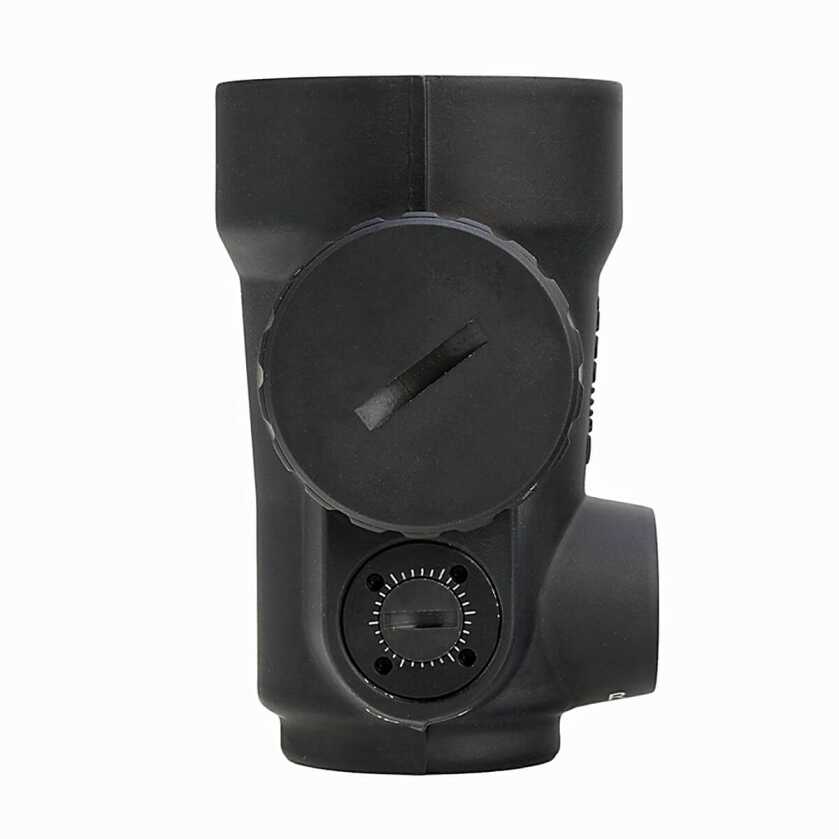
One of the things I most like about the MRO HD is the top-mounted reticle brightness control turret. It is an ambidextrous design, and I found it easy to switch between the dot reticle and segmented-circle reticle. There are six numbered brightness settings for the red dot and six settings for the complex reticle, as well as four night-vision-compatible settings. These are clearly marked, so it’s easy to dial the brightness up or down to suit lighting conditions. To give you an idea of just how bright the reticle can be, I spent most of the hunt, under the bright Texas sun, with the dot brightness at a setting of 2. The battery is also housed in the top of the brightness control turret, which includes a battery cap that remains happily tethered to the turret so you don’t lose it while changing batteries.
Windage/elevation adjustments are also well designed. They are capless and use sub-flush adjusters that can be turned with a coin or a cartridge rim. This eliminates the need for caps and ensures that you won’t lose zero by something brushing against the adjuster turrets. Each hash mark on the adjusters equals ½ MOA at 100 yards, and each adjuster has a 70 MOA adjustment range.
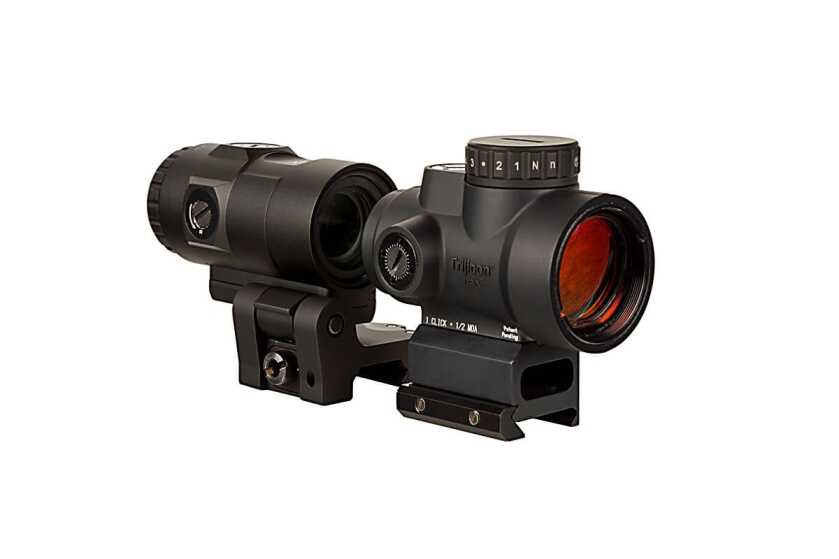
The MRO HD is, in a word, versatile. It’s a tough, go-anywhere optic that can handle most any task – be it sporting or tactical – with ease. If you need place shots precisely, you can do so with the 2.0 MOA red dot (which covers two inches at 100 yards) at reasonable distance, and you can extend effective range with Trijicon’s 3X magnifier. In tactical or fast-paced competitive use, the full segmented-circle reticle allows you to “splash” targets quickly at close range, but it’s capable of doing much more when you utilize its full capabilities and understand the numbers.
The circle measures 68 MOA across and 34 MOA from the center dot to any point on the circle. There are four interruptions on the circle at the 12, 3, 6, and 9 o’clock positions, with 1.0 MOA hash marks in those positions. Each interrupted portion of the circle measures 19 MOA across the gap. Once you know these numbers, they can become very handy. The average whitetail deer, for example, measures about 17-20 inches from the top of the back to the brisket. If that portion of a deer matches up with the 19 MOA gap, you know the deer is about 100 yards away. If the same portion of the deer takes up about 1/3 of the gap, you know the distance is closer to 300 yards. These numbers also come in handy when you consider that a standard man-size IPSC/USPSA silhouette target is about 18 inches wide. I haven’t tried it yet, but some shooters use parts of the segmented circle reticle as aiming points for moving targets.
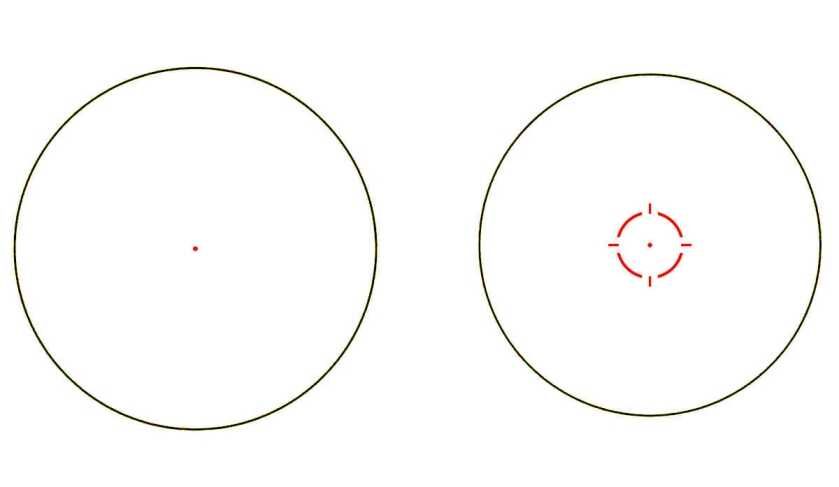
In summary, the MRO HD is highly versatile, user-friendly, and lighter than many competing products, and it has superior optical quality, a smaller footprint, and better battery life. What’s not to like? Some might say the price. As a top-tier supplier, Trijicon’s products aren’t cheap, but when it comes to quality optics, you get what you pay for. The MRO HD with a low mount has an MSRP of $969, but you can find it at a street price of about $650.
Contacts:

